Menachem's Writings
Why I Like to Photograph Reflections
or Why Do I Always Do Things in Reverse?
My late father used to wonder why I always (more likely often) did things in reverse. As he passed on when I was but thirteen years old, I suppose this characteristic already differentiated me as a small child. I thought I had perhaps at last found the answer to this mystery when my mother finally revealed what I had always suspected -- that I am really left handed (or "right brained") but was forced to use my right hand in preference. "It's the normal way of the world you know. People are not meant to be left hand dominant. It's not quite normal and looks weird [to me]."
But I think my condition is a lot more than just left handedness. It's a divergent worldview, a different perception of one's [my] surroundings. For instance, most people, when they sketch a face, firstdraw an outline. I prefer to commence with the eyes, followed by the mouth. Eyes are the key to the face. A person's inner light shines out from his eyes. Here is the entrance to the soul. The ingress to one's essence is in his eyes; from here it is emitted to the outside world. Eyes are the first thing you (subconsciously) look at when you meet someone.
Below is a photograph of a man where you really sense the subject's personality via his eyes. It is a photograph of renowned photographer, Joe DiMaggio.
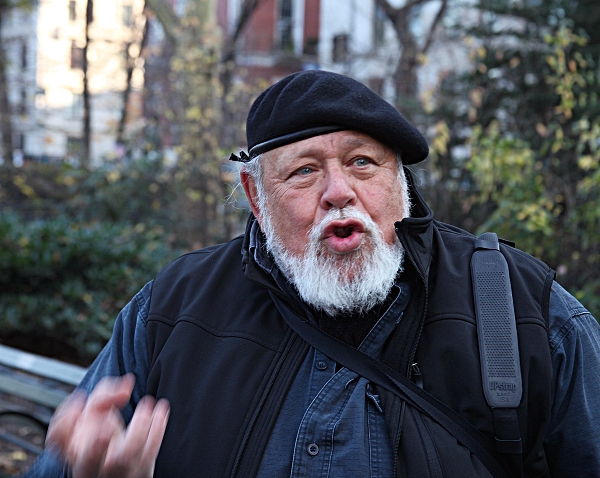
Photography, though an abstraction and merely a representation of reality, used to be valued for its truthfulness. "Photographs do not lie." We now know that is far from true and an entire genre of art has appeared in recent years, based on the manipulations of images.
Of late I am finding "classical", postcard photography is, well, boring. Etymologically (though not by common usage) the word photography means "writing with light". (Coined by Sir John Herschel, it won out over other suggestions, including photogene and heliograph.)
Straight photography in the hands of a master is a beautiful, elegant form. But my artform, I am not interested in recreating reality. I don't necessarily desire the subject of my work to be immediately, or if ever, apparent.
Often I feel a "been there, done that" situation when viewing photographs (including my own) -- and it wearies me.
A photograph capturing beautiful light, is more interesting, adds extra dimension. Most people don't notice the differing quality of light at different times of the day, in the various seasons and via diverse diffusions. Capturing this light with a camera bings a scene to life where the reality was unnoticed.
Look at the two examples below, both taken in Central Park, New York, on two different years.
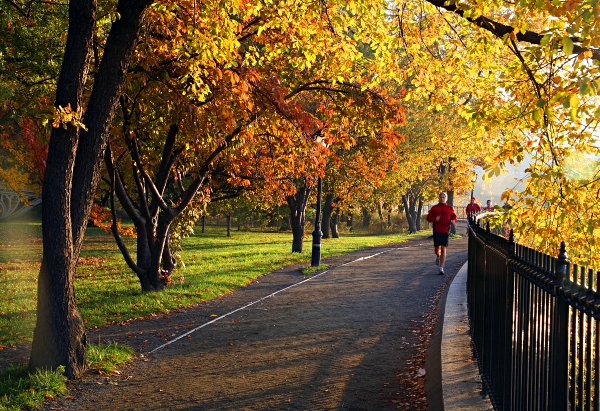
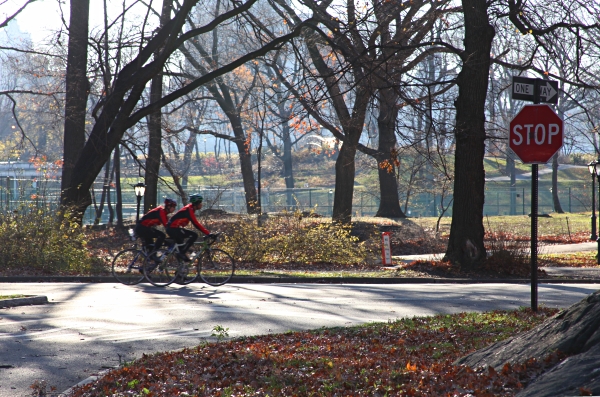
I find interest in what Joe DiMaggio calls, "time-motion studies". He helped me develop the skills required to achieve this style. These studies also unveil a world which is unobservable in reality.
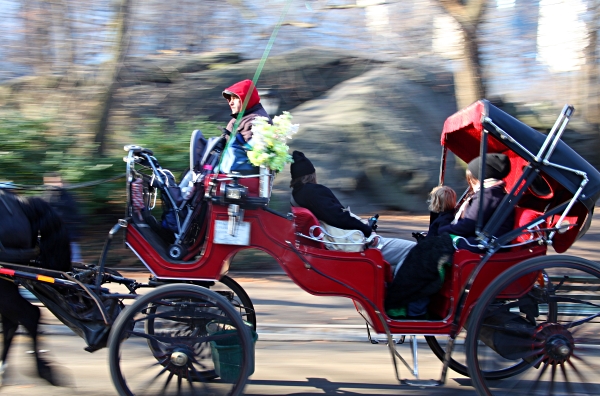
But it is reflections that I find to be most refreshing, always new and exciting . . . and, dare I say it, artisitic.
Jean Renoir said, "Reality may be interesting, but a work of art must be a creation . . . Reality is merely the springboard for artist." And so it is with reflections. A blurring of reality.
I recently discovered a new term to describe my work. I was on a gallery crawl around New York's Chelsea art centres. [Contemporary] abstract reality. In my with reflections, I find abstraction, but an abstract strongly rooted within reality.
Once you start to notice reflections in your surroundings, they quickly becomes a fascination. It is remarkable how ubiquitous they become. And they are there for all to partake. I use no special equipment.
For most viewers, reflections are a hindrance. Thus most of us learn to ignore them, block them out of the visua field, like those pesky ads on your browser page. Another nuisance cluttering your panorama.
As they impede what we wish to observe, our brains learn to block them out for us. But even our clever brains cannot always penetrate a reflection. Without polarised sunglasses, it can be difficult to look into a window situated opposite strong reflected light.
But this strong reflected light can be captured with the camera, with often pulchritudinous results.
Noting reflections in your wanderings is a form of observing a different dimension of the world. With the right perception, reflections can be converted into artistic work, into an art form of its own.
Various factors make a reflection interesting.

First there is the seeing of things twice, in double, but not as identical twins. The reality and the reflection. The corporal and the ethereal. The tangible and the conceptual.
Which way is up? I have often inverted photographs for an interesting effect. (Did I do it in the pond above?)
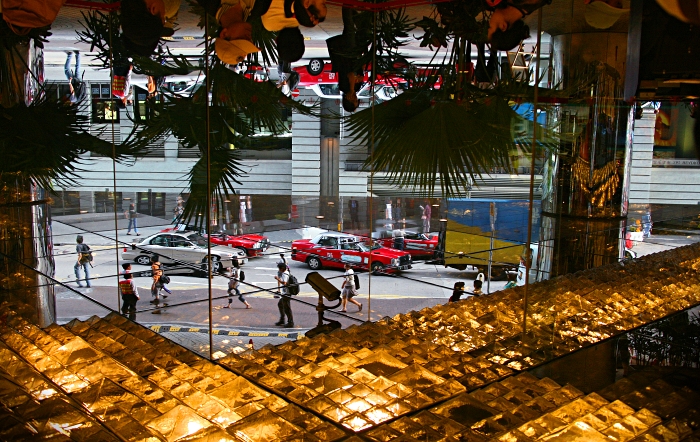
Some direct reflections can be too easy and thus uninteresting. An obtuse angle, the right light -- all contribute to make the difference. A "straight" reflection in a mirror or window usually produces a flat, mundane image, especially a straight mirror image of the view opposite.
Then there are textured backgrounds. A reflective surface combines with a reflected image, producing something fresh and new, often with an impressionistic tone and an enigmatic quality.
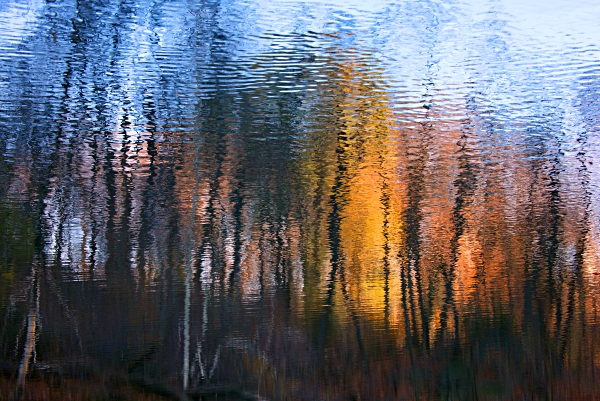
A feel like some of the impressionist painters comes to mind. Claude Monet perhaps? An added mood, unrevealed, unapparent in a "straight" shot.
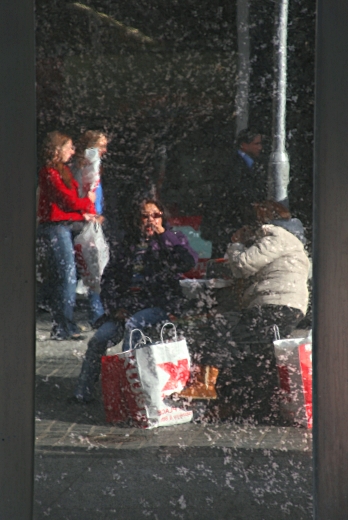
The variety of surface on which reflections can be found is sometimes surprising. Like these unbrellas on the side of dark brown UPS truck on a stormy day.

I wish to avoid a discussion of whether photography is art. Because it certainly is. Stieglitz devoted enough time to put this issue to bed. But photography is a different form of art to painting. Any artist, no matter which form, must conceive of his final image and capture it. Photography has the advantage of post processing. Sometimes my subconscience is stronger than my cognisance. I may only see the ultimate image on my computer screen.
All artists learn for each other. My textured surface reflections are not a copy nor an imitation of the impressionists' style. A similarity, a feeling exist. I enjoy their work, I understand their rationale. And I also like the look I am able to produce in my work.
But I believe the real attraction of reflections is when an image presents, or even blurs and confuses, more than one subject. One is dealing with two, and sometimes three and more visual layers. This evokes an ambiguity, an oscillation between the reflected and the reality, the internal and the external.
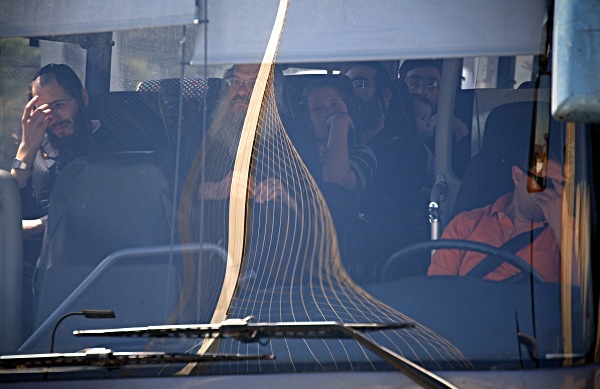
In both photography and painting, the observer is generally the person looking at the image, the party for whom the artist created his work. The artist places his viewer into his creation by making her the observer, hopefully enveloping her into his image. In this way the viewer becomes an indistinguishable part of the work.
However in a multi level reflection, the artist photographs both the observer and that which is observed, in the one representation. The external observer now becomes a voyeur, peeking into another's world. Or does observing an observer make you a part of his world too?
In the above picture, the lady behind the bearded gentleman is looking at the bridge. Is this a photograph of a bus and its passengers or of an ugly, mislocated string bridge at the entrance to Yerushalayim? Are you the observer of the bridge, or she? Are you intruding into her sleepy world or you are her partner in her observation? And the bearded gentleman, or the driver -- in which world are they?
Obviously all are oblivious to the camera, to the viewer.
A photograph often contains more than two layers.

The Azrieli Complex in Tel Aviv comprises three identically finished buildings, one round, one square and one triangular. In this image all three buildings are seen in the one image. The triangular building appears both in the background and again reflected in the round tower.
Chuang Tzu is universally regarded as the greatest Taoist after Lao Tzu. Once he dreamed that he was a butterfly, flying about enjoying itself. It did not know that it was Chuang Chou. Suddenly he awoke, and veritably was Chuang Chou again. But now he was not certain whether it was Chuang Chou dreaming that he was a butterfly, or whether the butterfly was dreaming that it was Chuang Chou.
Most philosphers want you to believe that there must be some distinction between Chuang Chou and his butterfly. But why? In our reflected world is there a distinction between reality and abstraction? Perhaps multilevel levels of reflection are multilevels of reality, or all are layers of abstraction.
There are many possible combinations and each observation reveals a new aspect.
I find this ambiguity interesting, revealing and exciting. I hope you enjoy them too.
Please feel free to
and don't forget to stop by my site to look at my latest (and classic) photographs.
Enjoy!
Previous posts:
- Stories HomePage
- Interview with Me in Midrasz Magazine published in Poland
- A DisKosher Disdelight Almost eating out on Broadway
- What Was the Crime of the Sodomites? -- Jingoism, xenophobia or sodomy?
- The more things change, the more they stay the same -- On Babel, the New World Order, One World Government, Carbon Trading and Socialism
- What I Meant to Say Facebook and Political Correctness
- On Spaghetti Makers, French Management and Assessing Personality
- My Holocaust Survivor Friends Tell It As It Is Another first hand account from the Amalekite and their partners' attempts to annihilate God and the Jewish people in this world
- Three Holocaust Experiences: My friends tell me their stories
- "What Hath God Wrought" Language Detectives at Work
- "The End is Nigh" -- The clock ticks on -- another step towards Final Redemption
- Preying on the Aged -- Like Jeffrey Archer's "Not a Penny More, Not a Penny Less"
- On Speaking Hebrew: How to pronounce Hebrew words correctly and why this is important
- The Human Cost of International Travel -- Jet Lag
- Another Uncle and Another, Very Different, Holocaust Experience
- The Fear of Revenge and the Great Flood of 1959 revisited after Thirty Years
- Vintage Lenses on Digital Cameras -- a critque
- Demographics -- It's Absolutely Not Only About Numbers
- Old Harry, Music and the Lifesaver
- I Once Had an Uncle
- More Stories
Be part of the new Internet tapestry phenomenon:
Help us sew the Logo Quilt. Add a patch with your logo.
And add some Word Links to your site.